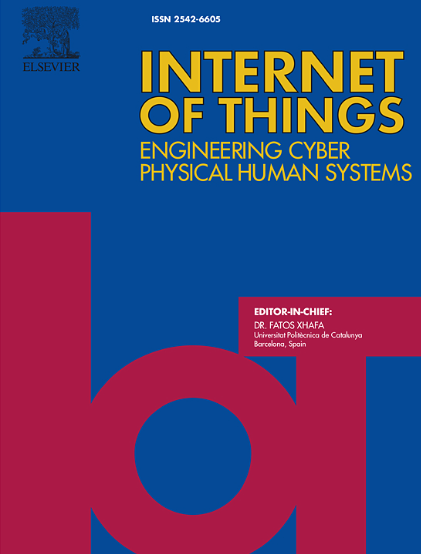用于物联网网络节点分类的强大图神经网络
IF 6
3区 计算机科学
Q1 COMPUTER SCIENCE, INFORMATION SYSTEMS
引用次数: 0
摘要
物联网(IoT)设备越来越多地应用于我们日常生活中的各种应用。物联网的网络结构是异构的,根据应用和地理结构的不同,会形成一个复杂的架构。为了在这种多样而复杂的关系中高效处理信息,网络运行需要一个强大的数据结构。图神经网络(GNN)技术正在成为预测复杂数据结构(如图)的有效工具。图可以用来模仿物联网网络的结构,并利用 GNN 技术处理来自物联网节点的信息。在本文中,我们的目标是探索 GNN 在执行给定物联网网络节点分类任务时的有效性。我们生成了三个不同的物联网网络,其网络规模、节点数量和特征大小各不相同。然后,我们测试了 12 种不同的 GNN 算法,以评估它们在物联网节点分类中的性能。我们对每种方法都进行了详细研究,以观察其训练行为、测试行为和抗噪声能力。此外,还研究了每个模型的时间复杂性和泛化能力。实验结果表明,一些方法在提高物联网节点分类准确性方面表现出较高的抗噪声数据能力。本文章由计算机程序翻译,如有差异,请以英文原文为准。
Powerful graph neural network for node classification of the IoT network
Internet of Things (IoT) devices are increasingly used in various applications in our daily lives. The network structure for IoT is heterogeneous and can create a complex architecture depending on the application and geographical structure. To efficiently process the information within this diverse and complex relationship, a robust data structure is needed for network operations. Graph neural network (GNN) technology is emerging as a capable tool for predicting complex data structures, such as graphs. Graphs can be employed to mimic the structure of IoT network and process information from IoT nodes using GNN techniques. In this paper, our goal is to explore the effectiveness of GNN in performing the node classification task for a given IoT network. We have generated three different IoT networks with varying network sizes, number of nodes, and feature sizes. We then test 12 different GNN algorithms to evaluate their performance in IoT node classification. Each method is examined in detail to observe its training behavior, testing behavior, and resilience against noise. In addition, time complexity and generalization ability of each model have also been studied. The experimental results show that some methods exhibit high resilience against noisy data for IoT node classification accuracy.
求助全文
通过发布文献求助,成功后即可免费获取论文全文。
去求助
来源期刊

Internet of Things
Multiple-
CiteScore
3.60
自引率
5.10%
发文量
115
审稿时长
37 days
期刊介绍:
Internet of Things; Engineering Cyber Physical Human Systems is a comprehensive journal encouraging cross collaboration between researchers, engineers and practitioners in the field of IoT & Cyber Physical Human Systems. The journal offers a unique platform to exchange scientific information on the entire breadth of technology, science, and societal applications of the IoT.
The journal will place a high priority on timely publication, and provide a home for high quality.
Furthermore, IOT is interested in publishing topical Special Issues on any aspect of IOT.
 求助内容:
求助内容: 应助结果提醒方式:
应助结果提醒方式:


